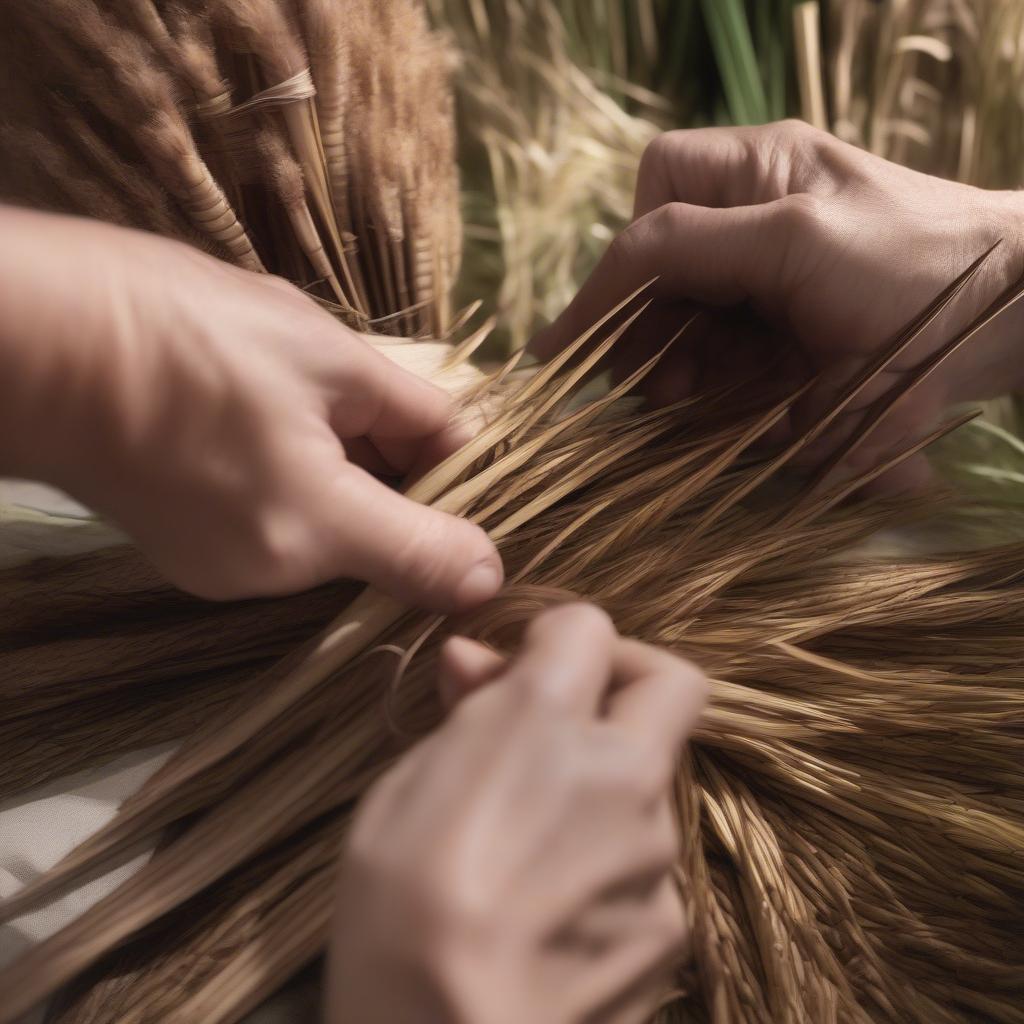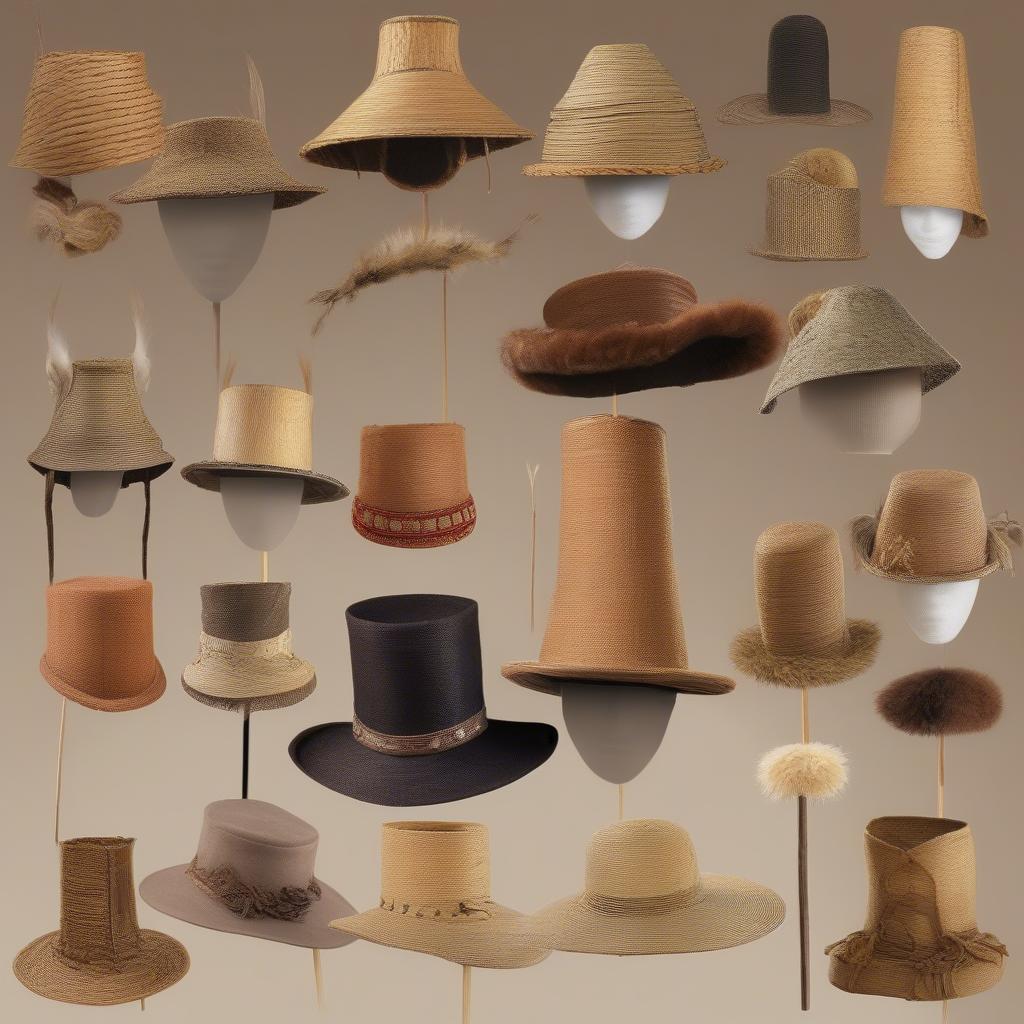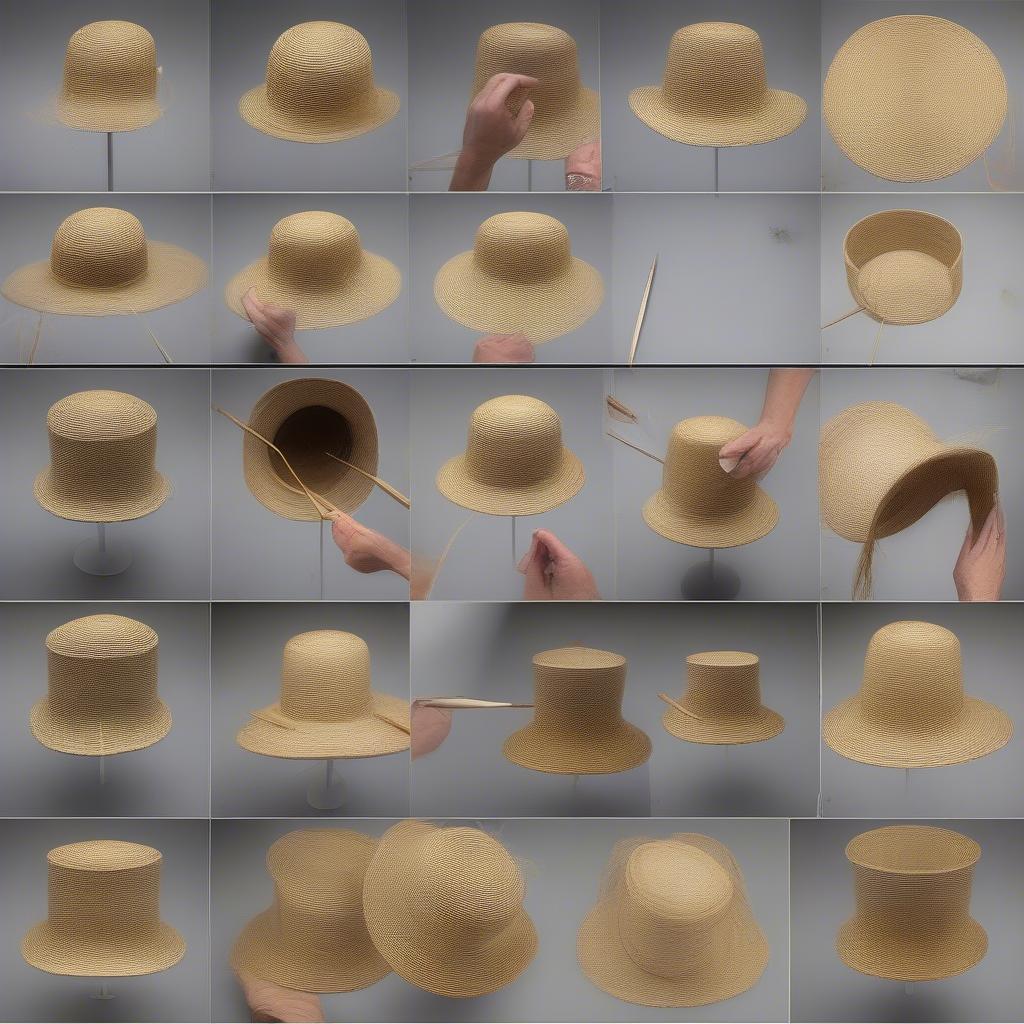Weave Hat
Mastering the Art of Cattail Hat Weaving
Cattail Hat Weaving is a traditional craft that transforms humble cattails into beautiful and functional headwear. This article delves into the fascinating world of cattail hat making, exploring its history, techniques, and the enduring appeal of these handcrafted treasures.  A close-up view of the cattail hat weaving process, showing hands skillfully manipulating the cattail leaves to create the hat's intricate structure.
A close-up view of the cattail hat weaving process, showing hands skillfully manipulating the cattail leaves to create the hat's intricate structure.
A Journey Through Time: The History of Cattail Hat Weaving
From ancient civilizations to modern artisans, cattail hat weaving has a rich and varied history. For centuries, cultures across the globe have utilized cattails for everything from shelter to sustenance, with hat making being a particularly prominent application. These hats offered protection from the elements and served as a testament to the ingenuity and resourcefulness of their creators.
Imagine early humans discovering the versatility of cattails, their strong yet pliable leaves perfect for weaving into protective head coverings. The craft has undoubtedly been passed down through generations, evolving and adapting to different cultural contexts. Now, cattail hat weaving continues to thrive, preserving a connection to our past while embracing contemporary creativity.
 Various historical examples of cattail hats, showcasing different styles and designs from different cultures and time periods.
Various historical examples of cattail hats, showcasing different styles and designs from different cultures and time periods.
Gathering and Preparing Cattails for Weaving
Before you begin weaving, you need to gather and prepare your cattails. The ideal time to harvest cattails is late summer or early fall, when the leaves are green and pliable. Choose healthy, undamaged leaves and cut them close to the base of the plant. cattail hat weaving book offers in-depth information on harvesting and preparing cattails. Once gathered, the leaves need to be dried and sometimes soaked before they are ready to be woven. This crucial preparation step ensures that the leaves are flexible and easy to work with, resulting in a more durable and aesthetically pleasing hat.
What are the key considerations when gathering cattails? Well, you’ll want to choose a location with a healthy cattail population, ensuring the sustainability of your harvesting practices. Avoid areas with pollution or contamination. Properly drying the cattails is essential for preventing mold and preserving their vibrant color.
The Art of Cattail Hat Weaving: A Step-by-Step Guide
The actual weaving process can range from simple to complex, depending on the desired hat style. Basic weaving techniques involve overlapping and intertwining the cattail leaves to create a circular base, gradually building up the sides of the hat. More intricate designs incorporate decorative elements, such as braids, patterns, and even the addition of other natural materials.
- Step 1: Start by creating a circular base with several cattail leaves, securing them together with a knot or a simple stitch.
- Step 2: Begin adding more leaves, weaving them around the base in a spiral pattern.
- Step 3: Continue adding layers, shaping the hat as you go.
 Step-by-step visual guide on weaving a cattail hat, demonstrating the key techniques and processes involved in each stage.
Step-by-step visual guide on weaving a cattail hat, demonstrating the key techniques and processes involved in each stage.
Beyond the Basics: Exploring Advanced Cattail Hat Weaving Techniques
Once you’ve mastered the basics, you can explore more advanced techniques, such as creating intricate patterns and incorporating different colors. “Experimenting with different weaves and embellishments allows you to create unique and personalized hats,” says renowned artisan, Sarah Miller, known for her intricate cattail creations. cattail hat weaving book provides excellent resources for learning advanced techniques.
Adding decorative elements, such as feathers, beads, or other natural fibers, can elevate your cattail hat to a true work of art. “Don’t be afraid to experiment and express your creativity,” adds Miller. “Cattail hat weaving is a journey of discovery, and each hat tells a story.”
Conclusion
Cattail hat weaving offers a rewarding way to connect with nature and create something beautiful and functional. From gathering the cattails to mastering the weaving techniques, the entire process is an immersive experience. So, grab some cattails and embark on your own cattail hat weaving adventure! cattail hat weaving book is a valuable resource for your journey.
FAQ
- What is the best time to harvest cattails for weaving? Late summer or early fall.
- How do I prepare cattails for weaving? Dry them thoroughly and sometimes soak them before use.
- What are the basic cattail hat weaving techniques? Overlapping and intertwining the leaves in a spiral pattern.
- Where can I find more information on advanced cattail hat weaving? cattail hat weaving book is an excellent resource.
- What are some decorative elements I can add to my cattail hat? Feathers, beads, or other natural fibers.
- How long does it take to weave a cattail hat? The time varies depending on the complexity of the design.
- Where can I find cattails to harvest? In wetlands, marshes, and along the edges of ponds and lakes.
For further assistance, please contact our 24/7 customer service team at Hotline: +84 388 951 999 or visit our offices in Hanoi, Vietnam, or Tech Avenue, Suite 12, San Francisco, CA 94105, USA.
